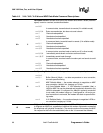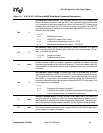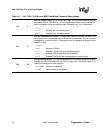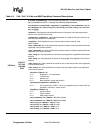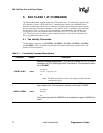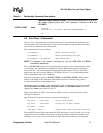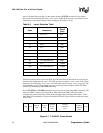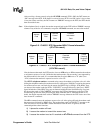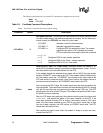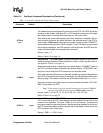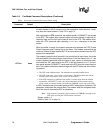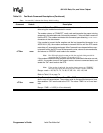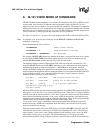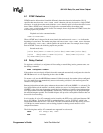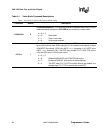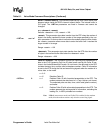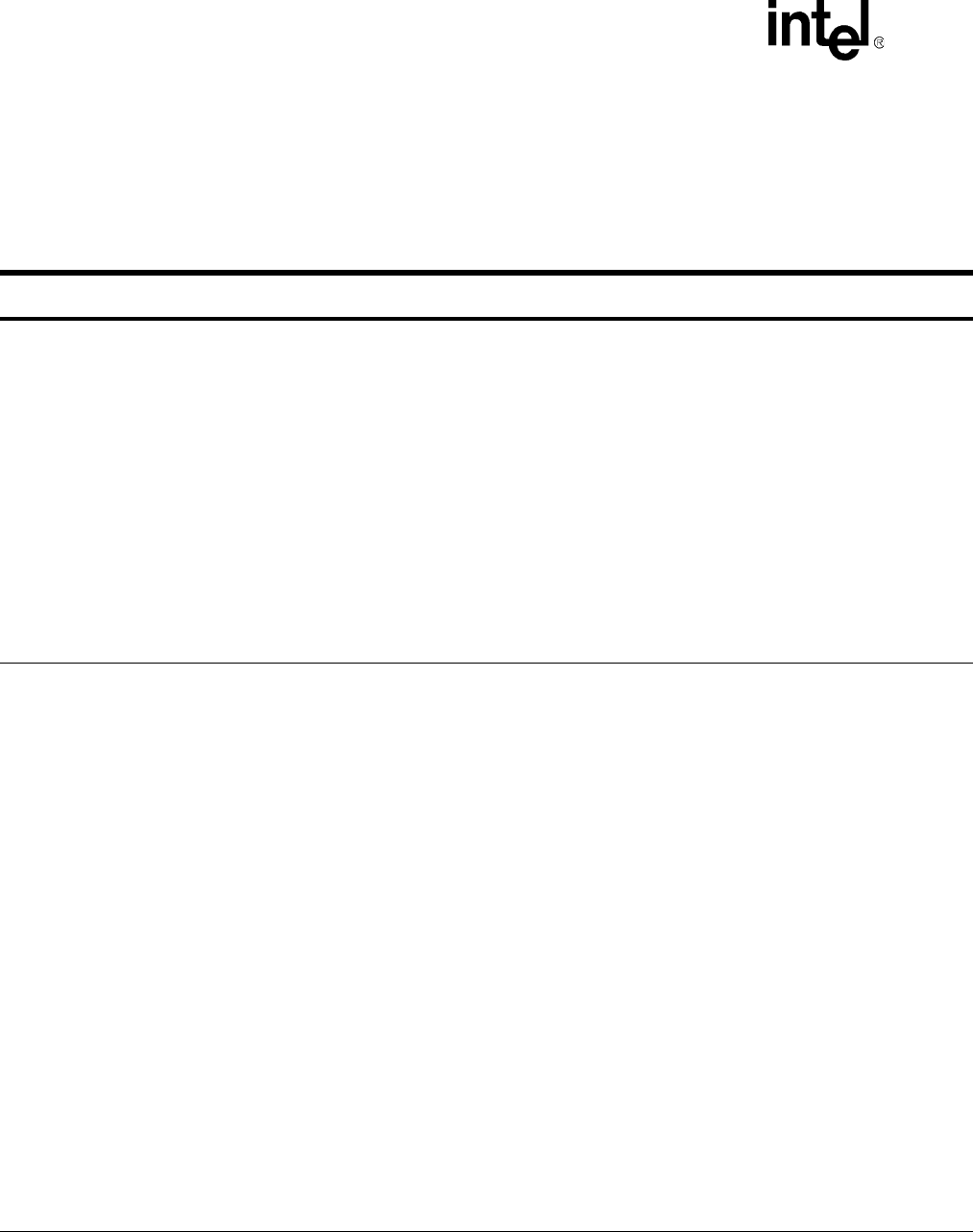
56K V.92 Data, Fax, and Voice Chipset
76 Intel Confidential Programmer’s Guide
The following data mode and voice mode AT commands are supported in fax mode:
Data: All
Voice: +FCLASS
Table 5-3. Fax Mode Command Descriptions
Note: An asterisk (*) denotes the factory-default setting.
Command Default Description
+FCLASS=1 0
Fax Mode Selection: This command is used to select a fax class, indicate current
fax class mode setting, and indicate supported fax classes. All fax mode com-
mands, except for +FCLASS, are valid only in fax mode.
+FCLASS? Indicates current fax class selection
+FCLASS = ? Indicates supported fax classes
+FCLASS = n Configures DCE for selected fax class. The modem
responds back with an ‘OK’ message at the same
DTE-to-modem data rate used to issue this command
n = 0, 1, 8
n = 0* Configures DCE for data modem operation
n = 1 Configures DCE for fax Class 1 modem operation
n = 8 Configures DCE for IS-101 voice mode
+FRH=n none
Receive HDLC Data:The +FRH=<mod> command causes the modem to re-
ceive HDLC-framed data using the modulation mode selected in <mod>. The mo-
dem then delivers the next-received frame to the DTE.
If the modem detects the selected carrier signal with an HDLC flag, the modem
sends a ‘CONNECT’ result code to the DTE. If the modem detects a different sig-
nal, the modem sends the “+FCERROR” (fax connect error) result code to the
DTE and returns to command mode. Upon loss of carrier, the modem returns to
command mode and sends a “NO CARRIER” result code to the DTE.
After receiving the HDLC flags, the modem strips away the flags and buffers the
received frames. The modem then transfers the received data to the DTE, starting
with the first non-flag byte and continuing through the last FCS byte. The DTE
should ignore the value of the FCS bytes. The modem also performs HDLC zero-
bit deletion and error checking.
After the FCS bytes are transferred, the modem marks the end of the frame with
<DLE><ETX> and reports the status of the frame reception to the DTE. If the
frame was received correctly (FCS is correct), the modem returns a “OK” result
code. If the frame was received in error (FCS is not correct, carrier lost, or data
lost due to data overflow), the DCE returns an ‘ERROR’ result code. The DTE
should then discard this frame.
After sending the status result code, the modem is ready to accept new com-
mands from the DTE.



